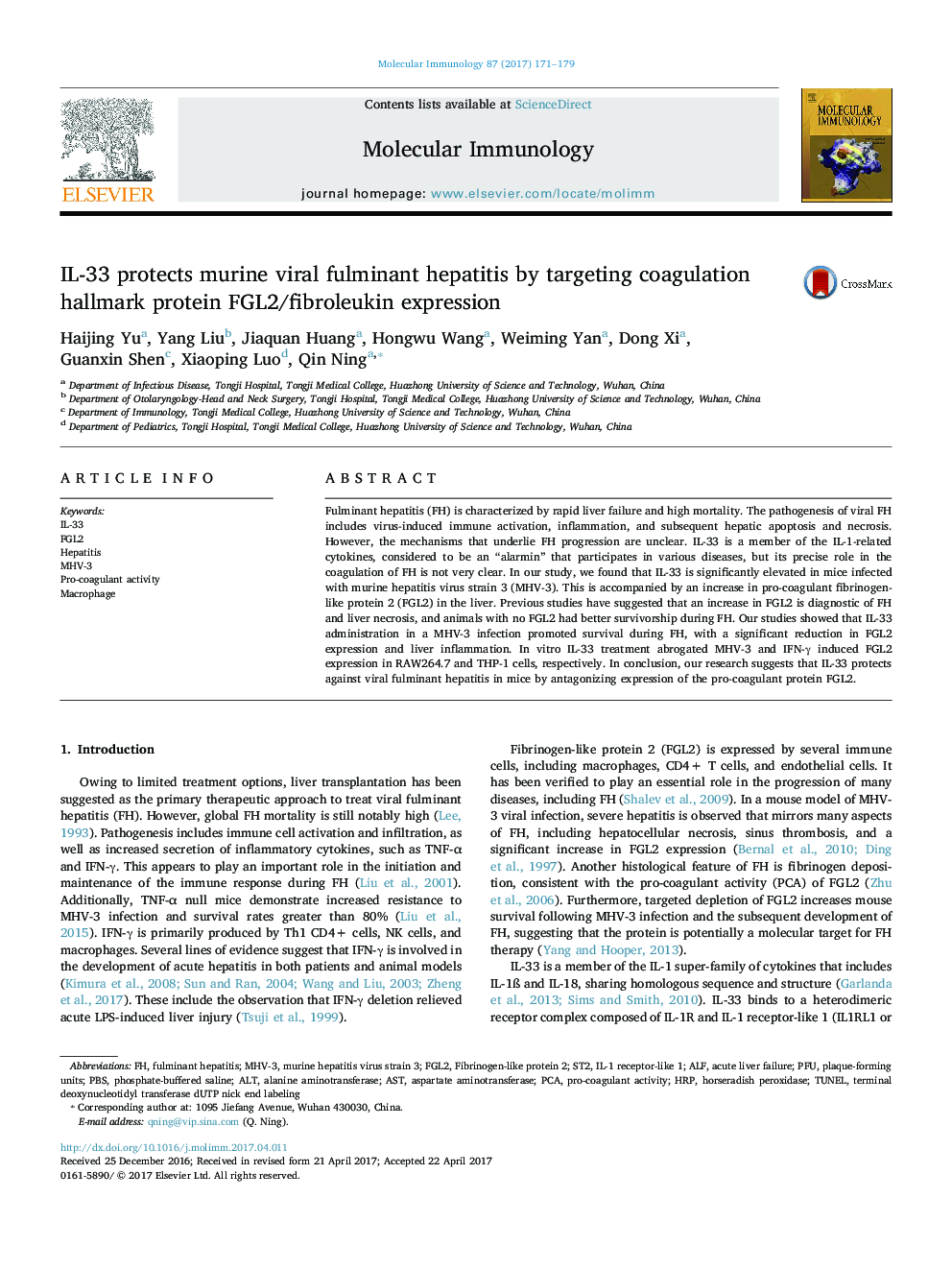| Article ID | Journal | Published Year | Pages | File Type |
|---|---|---|---|---|
| 5592145 | Molecular Immunology | 2017 | 9 Pages |
Abstract
Fulminant hepatitis (FH) is characterized by rapid liver failure and high mortality. The pathogenesis of viral FH includes virus-induced immune activation, inflammation, and subsequent hepatic apoptosis and necrosis. However, the mechanisms that underlie FH progression are unclear. IL-33 is a member of the IL-1-related cytokines, considered to be an “alarmin” that participates in various diseases, but its precise role in the coagulation of FH is not very clear. In our study, we found that IL-33 is significantly elevated in mice infected with murine hepatitis virus strain 3 (MHV-3). This is accompanied by an increase in pro-coagulant fibrinogen-like protein 2 (FGL2) in the liver. Previous studies have suggested that an increase in FGL2 is diagnostic of FH and liver necrosis, and animals with no FGL2 had better survivorship during FH. Our studies showed that IL-33 administration in a MHV-3 infection promoted survival during FH, with a significant reduction in FGL2 expression and liver inflammation. In vitro IL-33 treatment abrogated MHV-3 and IFN-γ induced FGL2 expression in RAW264.7 and THP-1 cells, respectively. In conclusion, our research suggests that IL-33 protects against viral fulminant hepatitis in mice by antagonizing expression of the pro-coagulant protein FGL2.
Keywords
Related Topics
Life Sciences
Biochemistry, Genetics and Molecular Biology
Molecular Biology
Authors
Haijing Yu, Yang Liu, Jiaquan Huang, Hongwu Wang, Weiming Yan, Dong Xi, Guanxin Shen, Xiaoping Luo, Qin Ning,
